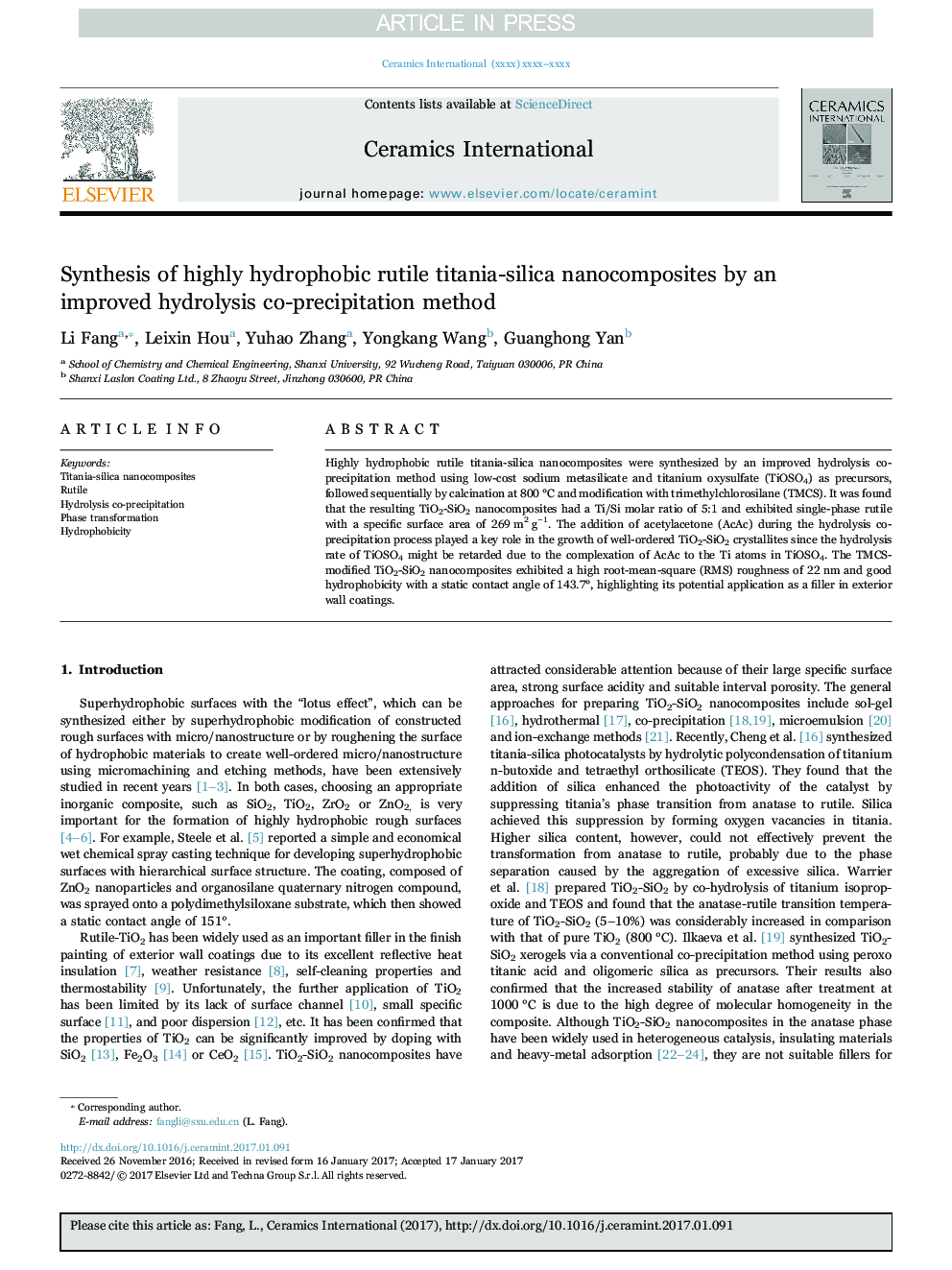| Article ID | Journal | Published Year | Pages | File Type |
|---|---|---|---|---|
| 5437567 | Ceramics International | 2017 | 7 Pages |
Abstract
Highly hydrophobic rutile titania-silica nanocomposites were synthesized by an improved hydrolysis co-precipitation method using low-cost sodium metasilicate and titanium oxysulfate (TiOSO4) as precursors, followed sequentially by calcination at 800 °C and modification with trimethylchlorosilane (TMCS). It was found that the resulting TiO2-SiO2 nanocomposites had a Ti/Si molar ratio of 5:1 and exhibited single-phase rutile with a specific surface area of 269 m2 gâ1. The addition of acetylacetone (AcAc) during the hydrolysis co-precipitation process played a key role in the growth of well-ordered TiO2-SiO2 crystallites since the hydrolysis rate of TiOSO4 might be retarded due to the complexation of AcAc to the Ti atoms in TiOSO4. The TMCS-modified TiO2-SiO2 nanocomposites exhibited a high root-mean-square (RMS) roughness of 22 nm and good hydrophobicity with a static contact angle of 143.7°, highlighting its potential application as a filler in exterior wall coatings.
Related Topics
Physical Sciences and Engineering
Materials Science
Ceramics and Composites
Authors
Li Fang, Leixin Hou, Yuhao Zhang, Yongkang Wang, Guanghong Yan,
